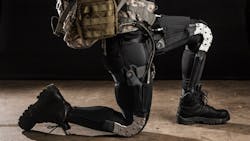Special Forces veteran says he's skeptical about the infantry's real need for military exoskeletons
WASHINGTON – For the last few years, the U.S. Army has seemed intent on developing mechanical exoskeletons. From the ONYX suit prototypes created by Lockheed-Martin to the now-defunct TALOS suit inspired by Iron Man, these exoskeletons are to enable American infantrymen a mechanical advantage in carrying supplies while on foot patrol. Outer Places reports. Continue reading original article
The Military & Aerospace Electronics take:
21 May 2019 -- The infantry soldier's supplies and gear can weigh upwards of 100 pounds. Army Techniques Publication 3-21.18 Foot Marches writes, the ability of Soldiers to march and fight is directly influenced by their combat load. Soldier loads should be limited to mission essential equipment. Excessive loads significantly reduce the Soldier's ability to accomplish the mission.
"In many cases, it's far better to be light on your feet and to be able to quickly move up, down, and around on the battlefield three-dimensionally, and an exoskeleton is just more crap that breaks, crap that needs batteries, and crap that slows you down," says former Special Forces Weapons Sergeant Chris Papasadero.
Rather than new load-bearing technologies, the former Special Forces warfighter says he would rather see money "go to better and lighter armor, improved integration of force multipliers like drones, and better attitudes in the military towards a good offense making a good defense."
Related: Army eyes exoskeleton technology to reduce wear and tear on soldiers from wearing helmets
John Keller, chief editor
Military & Aerospace Electronics

